New arrivals from Chablis
It’s the time of these taut, citrusy acidity rarities. The close neighbour of Champagne and Burgundy’s furthest outpost is Chablis – a tiny and frosty region with stubborn French winemakers.
The defining basis of the vineyards here is the Kimmeridge limestone, a compact mixture made up by clay and oyster fossils, which is one of the most valuable soils on which Chardonnay grows.
Among our freshly arrived wines, there are the oak-aged wines of the Lavantureux family, two single-vineyard wines from the classic-style William Fevre and new vintages from one of the most original estates of our biodynamic selections, from Chateau de Béru.
We tasted the wines in their natural environment, alongside white-fleshed fish, large-grained salt crystals, sea asparagus, oysters and aromatic lemons. These are Chablis' best friends, if we cook to go with them.
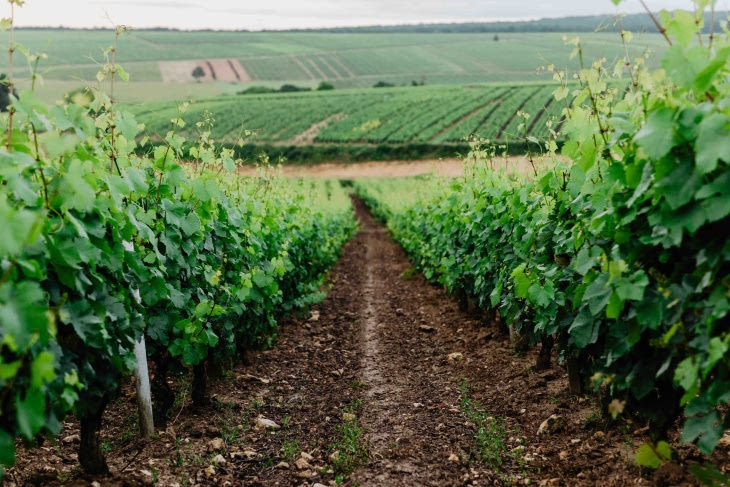
Domaine Lavantureux Chablis 2019
We introduced the Lavantureux family’s typically deeply flavoursome wines from Chablis in May, and now we’re switching to a new vintage. In 2019, half of the usual quantity of grapes made it to the cellar, but the must was a lot more concentrated and it had a riper taste than usual. This is also present in the wines, with the overall picture being richer, with yellower notes, honey, and the tension that is only characteristic of the wines grown here. Cultivated with skilled vineyard work, the 40-50-year-old Chardonnay vines grow in freshly ploughed stony rows. Winemaking is precise and practical in the used Burgundy barrels, as well as honest and pure.
Domaine Lavantureux Chablis Vauprin 2020
Roland Lavantureux started bottling wine in the 70s in Lignorelles, on the family estate. Up to that time his predecessors had delivered the wines to the Paris market in the 132-litre feuilette barrels typical of the region. In the last 40 years, the 5 hectares of family vineyards have expanded to 20 hectares, with old Chardonnay plots in the prestigious vineyards of the area. The most important of them is Vauprin, which is located on the southern slope of the village and is also one of the highest points in the wine region. Unusually, they age all their wines, including this one, in barrels.
2020 was the earliest vintage ever and also the first organically cultivated vintage at the Lavantureux family. Still, the new vintage of Vauprin gives us everything one is looking for from a Chablis, or even more so. The citrusy, taut palate is complemented by exceptionally clean woody notes and generous concentration. It’s an excellent combination of the winemaker and the region.
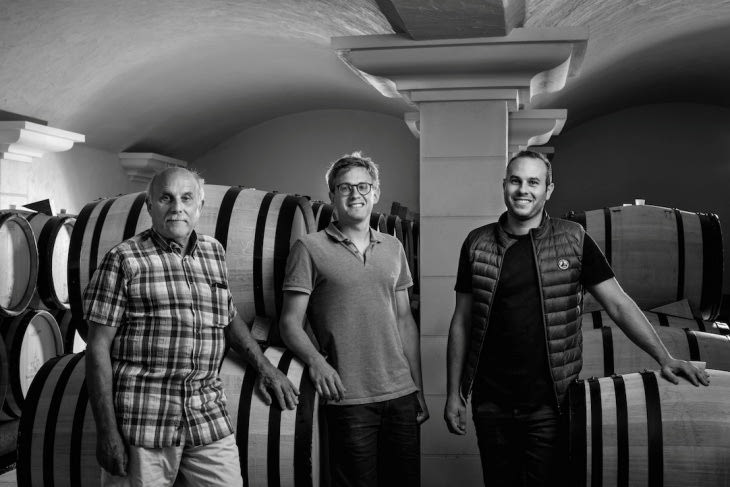
“We have an unusual style, we use barrels for ageing, which is not a common practice in Chablis. With this, we balance out the strong local character of the chiselled, taut-structured wines with the richness and depth given by the barrels. In this way, density and salty tension appear simultaneously on the palate." – Arnaud Lavantureux.
Chateau de Béru Chablis "Terroirs de Béru" 2020
This estate wine was blended from several parcels of Béru Hill, from 40-year-old vines, from Kimmeridgian limestone soil that characterises the whole region. The whole-bunch pressing was followed by spontaneous fermentation and a year and a half of ageing on lees, in used barrels. It has a unique character, oxidative notes, stone fruits, kombucha, camomile, white-fleshed fruits and a precise structure.
Athénaïs de Béru left behind a successful career when she returned from the world of finance in 2006 and took over the family estate from her father. From the very first day, she treated organic cultivation as a basic principle, and after the transition, the next step came quickly: since 2011, the entire estate has been certified biodynamic. The wines are fermented spontaneously, mainly in barrels, and after long ageing they are bottled unfiltered, with only a minimal amount of added sulphur or none at all. For the estate wine, they blend from several parcels of the Béru Hill, and the precise and lean character that is customary in the wine region is polished to roundness by the low-intervention winemaking and long ageing. Béru wines are softer, they have a broader structure, oxidative notes and huge energy.
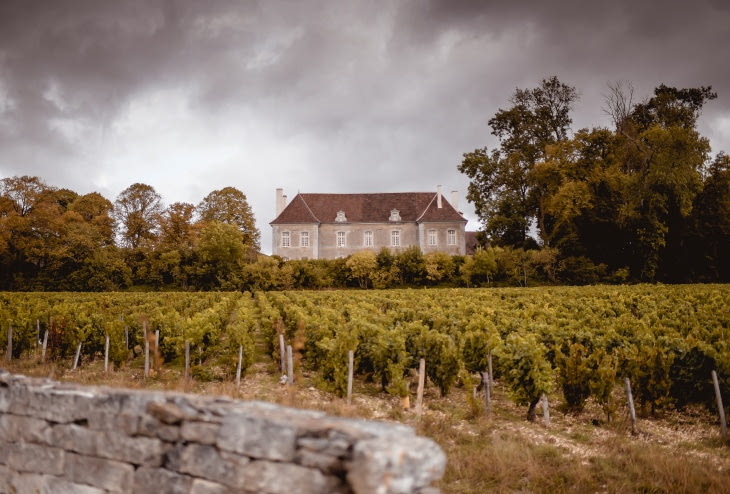
Chateau de Béru Chablis "Orangerie" 2019
An exceptional wine from the Orangerie plot, which is only half a hectare. The distinctive feature of the parcel that’s surrounded by the ancient stone walls of the chateau is that instead of pure limestone, clay is the predominant soil here, and this is precisely why the wine stands out. In this case, too, the oxidative character appears, complemented by a variety of citrus notes on the nose, and roundness, substance, and softer, juicy flavours on the palate.
Athénaïs de Béru left behind a successful career when she returned from the world of finance in 2006 and took over the family estate from her father. From the very first day, she treated organic cultivation as a basic principle, and after the transition, the next step came quickly: since 2011, the entire estate has been certified biodynamic. The wines are fermented spontaneously, mainly in barrels, and after long ageing they are bottled unfiltered, with only a minimal amount of added sulphur or none at all.

Chateau de Béru Chablis "Clos Béru Monopole" 2018
The estate’s emblematic parcel-selected wine comes from a 4-hectare plot located in the immediate vicinity of the chateau, surrounded by a stone wall built in the 12th century, with densely planted 40-year-old vines. The whole-bunch pressing is followed by spontaneous fermentation, then by two and a half years of ageing in large barrels, and another half year of maturation in the bottles. It’s an intense, powerful, vibrant wine that is mineral in every detail.
Athénaïs de Béru left behind a successful career when she returned from the world of finance in 2006 and took over the family estate from her father. From the very first day, she treated organic cultivation as a basic principle, and after the transition, the next step came quickly: since 2011, the entire estate has been certified biodynamic. The wines are fermented spontaneously, mainly in barrels, and after long ageing they are bottled unfiltered, with only a minimal amount of added sulphur or none at all.
Chateau de Béru wines

CHÂTEAU DE BÉRUChablis "Clos Béru Monopole" 2018 (Bio)
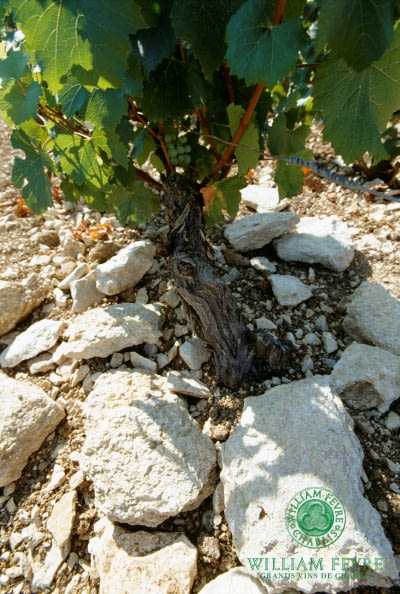
William Fevre Chablis 2020
The estate, registered since 1959, is an old classic of our French selection, and the relationship is further strengthened by the fact that the latest estate in our Champagne selection, Henriot, and William Févre, are managed by the same hands. The Févre family has been cultivating the challenging vineyards of the wine region for much longer, almost for 250 years, and today, under the management of Maisons & Domains Henriot, it has become one of the largest estates in Chablis with 78 hectares of its own vineyards and additional rented vineyards.
The role of the estate wine is still to provide a harmonious blend of the winery’s style and the most characteristic features of the wine region. It has a traditional style, the citrusy cool aromas are followed by a precise and carefully structured palate with long acidity
William Fevre Chablis Vaillons 2019 Premier Cru
The estate, registered since 1959, is an old classic of our French selection, and the relationship is further strengthened by the fact that the latest estate in our Champagne selection, Henriot, and William Févre, are managed by the same hands. The Févre family has been cultivating the challenging vineyards of the wine region for much longer, almost for 250 years, and today, under the management of Maisons & Domains Henriot, it has become one of the largest estates in Chablis with 78 hectares of its own vineyards and additional rented vineyards.
Vaillons, one of the estate's most important premier cru vineyards, is a good example of how important limestone is to the landscape and the soil of Chablis. At least four versions of the precious rock mix here at the place from where they also harvested the grapes for this wine. Its character is substantial, meaty and intense, with both flowers and white-fleshed fruits. After gravity-flow processing, half of it was fermented and aged in barrels, with the other half aged in tanks for 14 months.
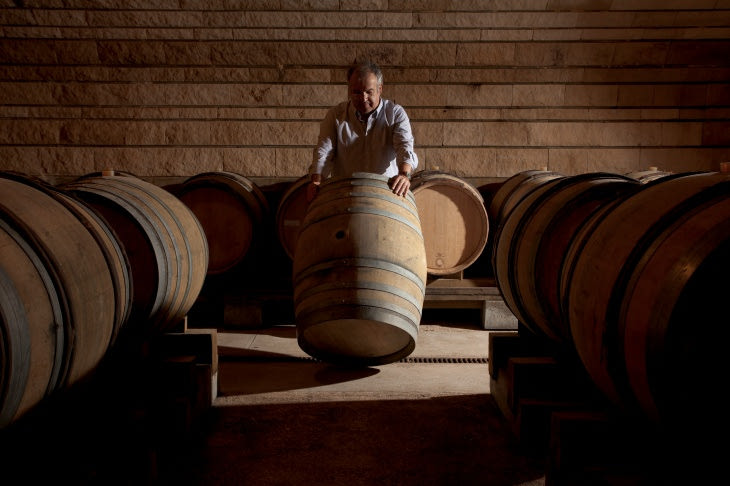
William Fevre Chablis Bougros 2019 Grand Cru
The estate, registered since 1959, is an old classic of our French selection, and the relationship is further strengthened by the fact that the latest estate in our Champagne selection, Henriot, and William Févre, are managed by the same hands. The Févre family has been cultivating the challenging vineyards of the wine region for much longer, almost for 250 years, and today, under the management of Maisons & Domains Henriot, it has become one of the largest estates in Chablis with 78 hectares of its own vineyards and additional rented vineyards.
In the central part of Chablis, the grand cru vineyards are concentrated on a small hillside, compared to the entire size of the wine region. Bougros is the westernmost parcel of these, from which they also harvested grapes for this wine. Tasting the estate's wines and stepping higher and higher, one understands what the grand cru category represents. It’s the infinitely harmonious and elegant interplay between minerality and powerful acidity. After the gravity-flow processing, half of the wine was fermented and aged in barrels, with the other half aged in tanks for 15 months.
William Fevre wines
